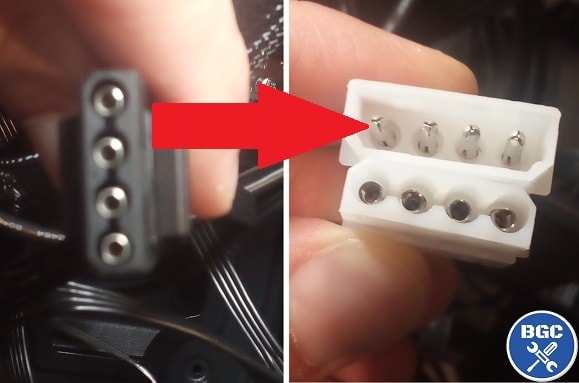Explore web search results related to this domain and discover relevant information.

Click the Curve toggle to enable the fan curve settings for a case, CPU, or GPU fan. Press the + (plus) icon in the bottom right corner of the app and pick Add “Graph” fan curve.
Click on the Temperature Source arrow and choose either the CPU, motherboard, or GPU temperature as the metric to control your fan speeds. Click on the Edit button to open a detailed view of the Graph curve. Left-click on the graph to add a new node. You drag it around to set the fan speed for a specific temperature range.Want to set up Fan Control to manage your system fans? Here's how.Sky-high temps are something that can strike fear into the heart of the bravest PC builder. Although dialing the speed of your PC fans to max RPM can alleviate your thermal woes to some degree (pun intended), doing so will cause your PC to sound like a jet engine on top of impacting the lifespan of your fans,Luckily, most operating systems, including Windows 11, allow you to set custom fan profiles using BIOS settings and OEM apps. But if you're not averse to third-party tools, Fan Control is an amazing application that provides a unified interface for you to control your cabinet, GPU, and CPU fans.
Answer (1 of 3): It's better to just add case fans to your PC or a liquid cooling system than to try to modify your GPU if you don't have enough experience with the engineering required to add on parts. Haphazardly adding parts to your GPU could cause you more trouble in the long run, especially ...


The Phillies promoted fan favorite Garrett Stubbs and acquired veteran left-hander Tim Mayza.
Although the Phillies recently signed Walker Buehler, their moves haven't ended there. On Monday the team called up longtime backup catcher and fan favorite Garrett Stubbs. In addition to Stubbs, the Phillies also acquired veteran left-hander Tim Mayza.Phillies add fan favorite and veteran reliever as rosters expand originally appeared on The Sporting News
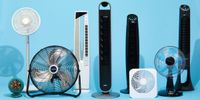
A fan is a quick and easy way to add airflow to a stuffy room, and they fortunately come in a variety of configurations so you can find the right fit for your home — whether you want a sturdy table fan for your dresser or nightstand to help you fall asleep or a large yet slim tower fan that ...
A fan is a quick and easy way to add airflow to a stuffy room, and they fortunately come in a variety of configurations so you can find the right fit for your home — whether you want a sturdy table fan for your dresser or nightstand to help you fall asleep or a large yet slim tower fan that oscillates and keeps your office or living room comfortable.Standout features: The fan doesn't oscillate, but the pivoting head lets you direct the airflow where you'd like; Vornado says it reaches up to 100 feet. The stand's height can also be adjusted from 28 to 40 inches for added versatility.✔️ Extra features: Finally, we consider the number of settings on the fan, as well as any additional or unique features, such as oscillation, remote operation, smart technology integration and automatic shut-off.Nothing like a strong breeze to help you get through the summer.
We're sorry but services-online-express doesn't work properly without JavaScript enabled. Please enable it to continue · Local store prices may vary from those displayed. Products shown as available are normally stocked but inventory levels cannot be guaranteed · For screen reader problems ...

The Edmonton Oilers can open up roster spots and salary cap by executing this trade proposal to bring back a player the fans love.
That kind of commitment to the fans and team is precisely the kind of swagger the Oilers need to inject into their lineup. Allan Mitchell of The Athletic has predicted that the Oilers may lose Stecher to the waiver wire before the regular season begins. Additionally, Oilers Now host Bob Stauffer has hinted at the possibility of Janmark being moved out to create cap space.The Edmonton Oilers can open up roster spots and salary cap by executing this trade proposal to bring back a player the fans love.wpDiscuzThis is the place where I felt most comfortable and was myself,” Kostin revealed to Shevchenko. “In Edmonton, the fans understand hockey; they see all the little things: even if you didn’t score or made a mistake, but you gave it your all, they appreciated it.Kostin went on to explain how he felt playing for the Oilers and their fans.
Add one to exhaust at the back. Heat rises so its beter to help dissipate that heat at the top back end of the case than introduce new air from the bottom. Also setting fan curves for your case fans and GPU fans will help.
What if I add one right under the Gpu and one as a rear will that neutralize the pressure and slow down from getting more dust Into it? ... Generally you should try to match the number of fans doing intake and exhaust respectively.Seems to me that most computer cases have enough open areas that to create a pressure differential would require a lot more PSI then a normal computer fan could create. I feel that moving air around your case is far more important then drawing in cool air and exhausting warm. I have to see if I have a thermometer I can put in the case and compare it to sir temps being exhausted. Interesting experiment. Either way I think add a fan or two blowing in your case and one sucking out has been the historic solution.With 3 in and 2 out another fan will not make a meaningful difference in temps. ... You can add a rear exhaust fan, but if your temps are already fine you probably can get away without one. Undervolting and actually cutting down your power draw makes a bigger difference.For some reason I did not read the title correctly and missed the part where you said you already have 3 intake fans. Since this is the case, I suggest you add a fan to the back as an exhaust.

Installing a ceiling fan is a great way to upgrade your home's look, improve air circulation and lower your energy bill. Whether you're adding a ceiling fan to your living room or outdoor space, our step-by-step guide will show you how to install a ceiling fan, as well as offer tips and safety ...
Installing a ceiling fan is a great way to upgrade your home's look, improve air circulation and lower your energy bill. Whether you're adding a ceiling fan to your living room or outdoor space, our step-by-step guide will show you how to install a ceiling fan, as well as offer tips and safety considerations to keep in mind.Connect the fan wires to your household wiring. Some fans come with additional wires, so be sure to follow your owner's manual for specific instructions.In just a short time, you can learn how to install a ceiling fan and add to your decor while improving your air quality at home with better air circulation. Looking for a product to complete your project?Learn how to install a ceiling fan from start to finish with our step-by-step guide. From pre-installation preparations to wiring tips, our article has you covered.
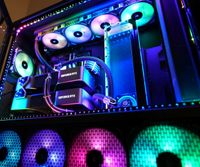
For Example B, let’s look at a more traditional case, the Be Quiet Silent Base 802. A optimal fan configuration would include intake fans on the front of the case. You’ll also want to add the top exhaust fans.
Keep your PC components as cool (and fast) as possible by setting your fans up the right way.This guide will explain how to set up your PC fans for the best cooling performance—because you didn’t stand in line for days to get your expensive new graphics card just for it to thermal throttle, after all.Let’s start with the basics. How you point your fans determines whether it sucks in cool air or spits hot air out of your system. Some fans will have an arrow indicating the correct flow direction. If they don’t, a good rule of thumb is that air will almost always flow in from the front, where the branding sticker generally is.When fans pull in more air than they push out of a PC case, it creates positive pressure. Negative pressure pulls more air out, often creating a vacuum effect. For optimal cooling performance in a standard system, you want to be slightly more on the positive airflow side.
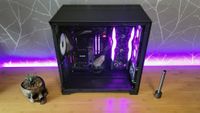
If you’re technical and have a computer that supports it (prebuilt systems oftend don't), you can even go into your system’s BIOS and create a custom fan curve to balance cooling performance with noise levels. Another option is to add more or larger fans to your system.
Front, Rear, Top, and Bottom: In this configuration, the front and bottom fans draw air into the case, while the top and rear fans exhaust hot air out. This creates a clear channel across the core components of your computer while also feeding additional cool air directly upwards.It is similar to the traditional Front and Rear configuration (described below) but with added air volume to increase the rate of flow. This scenario provides cool air directly to the GPU and pushes that air upward, toward the CPU and exhaust fans.If you have three fans and a dedicated GPU, we recommend placing them in the front, rear, and bottom of your case. With additional fans, consider the arrangement of your components, any wires or structures that might impede airflow, and position your fans accordingly to draw air in from the bottom right (front), flowing to the upper left (rear) of your case.It is not as common and generally not as effective as push-oriented fans. The same principles about positioning and expelling warm air apply here. ... Push-Pull: This is a popular choice that can increase the effectiveness of an all-in-one CPU cooler, but requires additional fans and space within your case.
These fans are typically used for high volume, high static pressure applications. The series ADD is designed and constructed for efficient & economical operations and is direct drive, therefore requiring little or no maintenance. Heavy duty cast aluminum airfoil or polyamide glass reinforced ...
These fans are typically used for high volume, high static pressure applications. The series ADD is designed and constructed for efficient & economical operations and is direct drive, therefore requiring little or no maintenance. Heavy duty cast aluminum airfoil or polyamide glass reinforced (PAG) blades are standard to ADD series fans providing maximum performance at low sound levels.This is an exhaust fan. Please consult factory for supply applications. OPTIONAL - Reversing blades available on 30”, 36”, 42' and 48” models.Heavy gauge steel fan panel with deep spun and flared venturi for maximum efficiency.Note: These fans can be combined with Explosion Proof Motors for use in hazardous locations.


When top efficiency and quiet operation are required, the ADD Direct Drive Tubeaxial Fan offers unsurpassed value for industrial applications.
In addition to capacities ranging to 61,000 cfm, this powerful industrial fan is available in diameters from 12″ through 60″. This heavy duty tubeaxial fan features a welded steel construction with spark resistant, cast aluminum airfoil impellers.Moreover, the rugged fan housing is constructed of heavy duty welded steel and angle ring flanges. ADD fans work in a variety of industrial ventilation applications. For example, general ventilation, process ventilation, and in-line duct boosters are ideal applications for the ADD tubeaxial fan.In an offshore oil well platform, a customized ADD Fan uses a hot dipped galvanized coating and continuously welded construction that is designed to withstand the ocean’s harsh environment.Visit CFM Select to utilize Continental Fan’s state-of-the-art fan selection and quotation platform.
Just land one end of some new 14-2 romex in the existing box and pull the wire to the fan box location. Depending on local codes, you may or may not be required to drill a hole through the ceiling joists. If you need to drill a hole, I'd recommend 5/8" paddle bit for a single 14-2 romex.
Hi all, I am looking to install a ceiling fan in my main bedroom. There is currently no ceiling lights for me to tap into. Where can I get power for…Posted by u/bobo_the_hobo_dog - 0 votes and 25 commentsYou would need to find the center of the room (or desired location) and cut out a 4" hole for an Old-Work Fan Box. If there is a joist near the center of where this hole will be, then you will need a Fan-Rated Pancake Box.Just land one end of some new 14-2 romex in the existing box and pull the wire to the fan box location. Depending on local codes, you may or may not be required to drill a hole through the ceiling joists. If you need to drill a hole, I'd recommend 5/8" paddle bit for a single 14-2 romex.

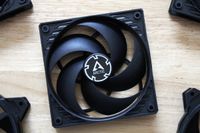
Larger fans can usually spin at lower speeds and still move plenty of air without making much noise. Some manufacturers incorporate LED lighting into their fans as well. When adding fans to a system, maintaining positive pressure within the case can prevent dust from being sucked into any open ...
Larger fans can usually spin at lower speeds and still move plenty of air without making much noise. Some manufacturers incorporate LED lighting into their fans as well. When adding fans to a system, maintaining positive pressure within the case can prevent dust from being sucked into any open holes or crevices.System builders usually rely on heatsinks and fans to manage the heat within a PC. If you’re upgrading or building a new PC—or your PC is overheating—you may need to install new or additional fans.If all your system’s fans are functioning, yet the system runs hot or unstable, you may want to add more fans. If your case can’t take any more fans, or is getting too loud, consider liquid cooling.Buying a fan controller will give you additional fan headers. Alternatively, you can use 3-pin/4-pin to MOLEX adapters and connect the fans right to the PSU.
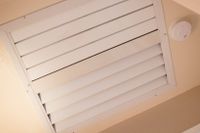
Installing a whole house fan should be done by a professional. The installer should: Measure your attic space accurately. Install dedicated circuit wiring. Add additional attic vents if necessary.
A whole-house fan, in combination with other cooling systems, can meet all or most of your home cooling needs year round.Whole house fans pull outdoor air into a home through open windows and exhaust it through vents in the attic and roof. This air circulation, in cubic feet per minute (CFM) provides cooling both in the house and the attic. Whole house fans should be designed to provide an air flow that is at least one half the total volume of the house (for example, an 8,000 ft3 house would need at least 4,000 CFM of airflow).Whole house fans can be an energy-efficient alternative to air conditioning in some climates.Combined with ceiling fans and other circulating fans, they can provide comfortable summer conditions for many families.
For Example B, let’s look at a more traditional case, the Be Quiet Silent Base 802. A optimal fan configuration would include intake fans on the front of the case. You’ll also want to add the top exhaust fans.
Keep your PC components as cool (and fast) as possible by setting your fans up the right way.This guide will explain how to set up your PC fans for the best cooling performance—because you didn’t stand in line for days to get your expensive new graphics card just for it to thermal throttle, after all.Let’s start with the basics. How you point your fans determines whether it sucks in cool air or spits hot air out of your system. Some fans will have an arrow indicating the correct flow direction. If they don’t, a good rule of thumb is that air will almost always flow in from the front, where the branding sticker generally is.When fans pull in more air than they push out of a PC case, it creates positive pressure. Negative pressure pulls more air out, often creating a vacuum effect. For optimal cooling performance in a standard system, you want to be slightly more on the positive airflow side.

If it has a small three-pin connector, plug it into a power connection marked "fan" on your motherboard, but if it has a large four-pin white Molex connector, connect it to one of the power connectors coming out of your computer's power supply.
Computers that run warm are more likely to shut down unexpectedly, while overheated computers can experience premature CPU or power supply failure. Given that today's business computers and applications are good enough to keep around for a while, investing in additional cooling fans now can help to reduce your company's information technology budget over the long term.While cooling strategies vary, if your case doesn't have any fans, placing a fan blowing out in the upper half of the computer's back panel is a good first choice. If you already have a high-mounted rear exhaust fan, add an intake fan blowing into the case in the upper part of the lower half of the front panel.If it has a small three-pin connector, plug it into a power connection marked "fan" on your motherboard, but if it has a large four-pin white Molex connector, connect it to one of the power connectors coming out of your computer's power supply.Look at the arrows on the fan's casing to determine which way it blows air and mount it appropriately.

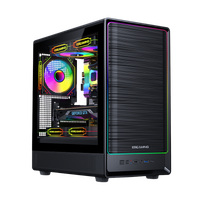
Are you looking to take your gaming experience to the next level with improved cooling for your PC? Look no further! In this article, we will guide you on how to easily install additional fans in gaming PC cases to achieve optimal airflow and keep your system running smoothly.
When it comes to optimizing the performance of your gaming PC, proper cooling is key. Installing additional fans in your gaming PC case can help ensure that your components stay cool, preventing overheating and potential damage. However, not all fans are created equal, and choosing the right fan for your gaming PC is crucial.Before purchasing new fans, take note of the available mounting points in your case and consider how many fans you can realistically fit. It is also important to consider the size of your components, as larger components may obstruct airflow and require additional fans for proper cooling.When choosing fans, consider factors such as airflow, noise level, and RGB lighting options. It is also important to consider the type of bearing used in the fan, as this can affect both performance and longevity. In addition to selecting the right fans, proper installation is key to achieving optimal cooling performance.When installing additional fans in your gaming PC case, be sure to follow the manufacturer's instructions carefully. Make sure to secure the fans properly to prevent vibration and noise, and ensure that they are oriented in the correct direction for optimal airflow.
Ceiling fans can add indoor comfort and style. Use our step-by-step guide to learn how to install a ceiling fan or replace existing light fixtures.
Certain parts might be included with your ceiling fan, or you might need to purchase additional parts. Check the packaging for any ceiling fan you’re considering to see if everything you need for installation is included.Make sure it’s acceptable for ceiling fan installation and will support the weight of the fan. ... If you’re installing a new electrical box, fasten it to a ceiling joist or a 2-by-4 wood brace between two ceiling joists. If there isn’t a suitable joist or brace available, but you have access to the framing through the attic, add a brace that can support the fan.For a flush mount installation, attach the top housing, trim ring (if applicable) and canopy to the fan motor assembly. Fans that work in either downrod or flush mount applications might need additional adjustment to convert them for a flush mount installation.Follow these steps to install ceiling fan mounting hardware — an important part of learning how to add a ceiling fan.

But there are situations where ... case fan (or 2, or 3, or more) including: For really powerful PCs to maximize airflow and keep temperatures as low as possible. If you'll be overclocking (which generates more heat). If your PC will be sitting in a fairly warm room. If you want to add more lighting ...
But there are situations where you would want to buy and install an extra aftermarket case fan (or 2, or 3, or more) including: For really powerful PCs to maximize airflow and keep temperatures as low as possible. If you'll be overclocking (which generates more heat). If your PC will be sitting in a fairly warm room. If you want to add more lighting effects (case fans can include LED or RGB).Anything more than 3 or 4 fans is likely to only give small, diminishing returns, and when you see people fully kit out a build with a boatload of fans it's usually for aesthetics and not practicality (but again, it completely depends, and so certain monster setups may benefit from a ton of fans). For lowered-powered PCs such as a light gaming build using an APU like the Ryzen 3 3200G or Ryzen 5 3400G (integrated graphics, ie no graphics card), or for a basic home office PC, you wouldn't even need to add a front fan and could actually get away with just having a single exhaust fan.The good news is that you don't have to get your fan setup perfect the first time around, and you can always adjust things later on (adding fans or changing their placement) if you want to try and lower temperatures (or noise).Connect a case fan directly to the PSU using a molex adapter · VPN software can be important in this day and age, especially if you do lots of online banking and/or use public WiFi whilst travelling. Having a VPN adds an extra layer of security to your PC or laptop when online to help protect your data, passwords, financials, etc from hackers or malicious programs.
